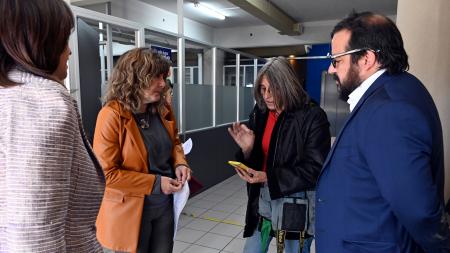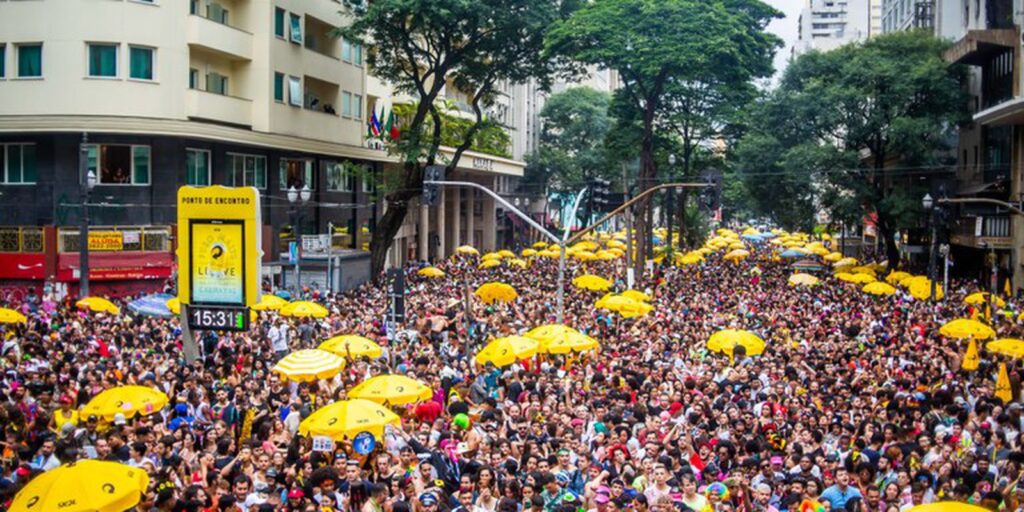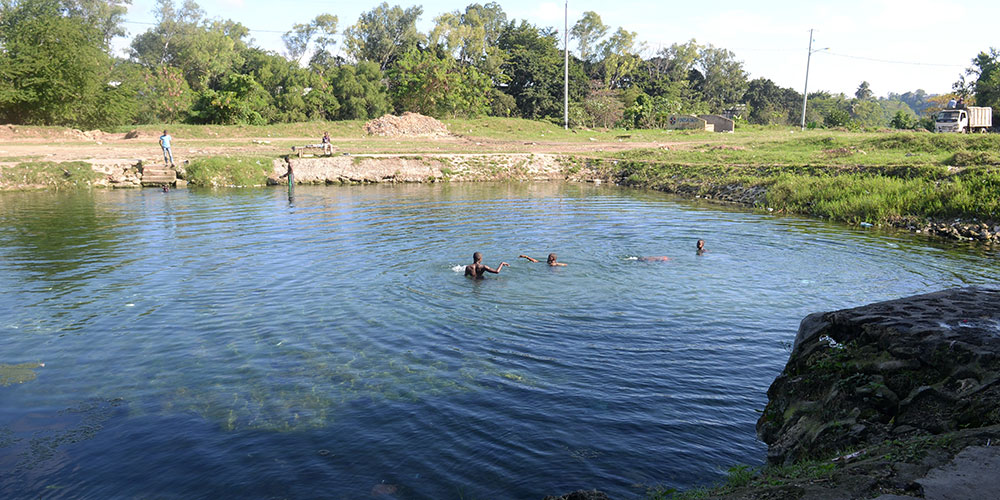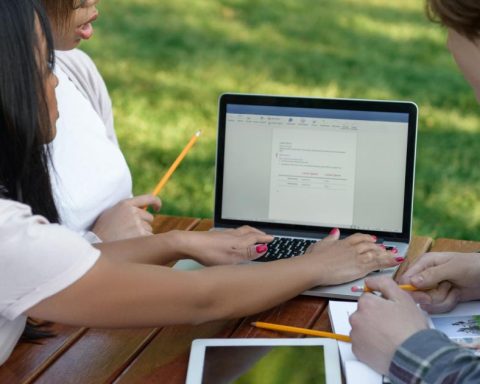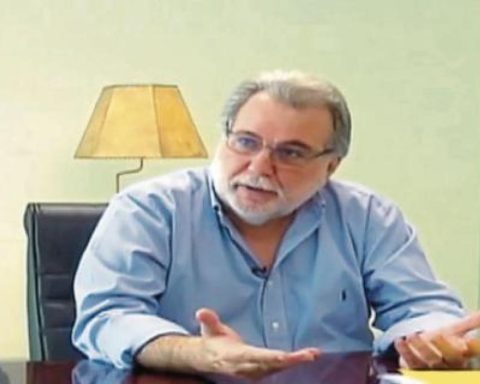The public news agency Télam filed a criminal complaint this Friday in the city of Bariloche for the attack on photojournalist Alejandra Bartoliche during the coverage of the seventh March for Sovereignty of Lago Escondido, on February 1.
“Journalistic coverage of social, political, cultural and economic events cannot be undermined by acts of planned violence, whether carried out by security forces or by private individuals or with the collusion of both,” it was warned in the complaint that Télam presented together with Bartoliche before the Bariloche prosecutor’s office.
The complainants were received in person by the chief prosecutor of the Third Circumscription of the province of Río Negro, Betiana Cendón, who stressed “the importance of protecting the right to work of journalists” even more “in relation to violence against the woman”.
The complaint was filed with the prosecutor by the photojournalist, who has been working as a journalist for the agency for 25 years, together with the manager of Legal Affairs of Télam SE, Juan Ignacio Mareque.

Both requested to be considered as individual plaintiffs – in a unified manner – in the case and also presented documentary material as evidence, in particular filming and photos of the attackers and police officers who were at the scene at the time of the events.
In the judicial presentation it was warned that during the episode that Bartoliche lived in the Lago Escondido area “his physical integrity was violated and his life was put in danger.”
“Facts such as those that occurred violate the right to freedom of the press that is guaranteed in our National Constitution -among others- by its article 14 and international agreements,” the complaint added.
In addition, it was highlighted that one cannot lose sight of “that as recommended by the Office of the Special Rapporteur for Freedom of Expression of the Inter-American Commission on Human Rights (IACHR) when referring to Violence against women journalists, one must consider -at the time of the investigation and prosecution – the reinforced due diligence that the gender perspective implies”.
In the letter, it was also noted that “the violence exerted on the complainant had a wide national repercussion and has deserved the condemnation and repudiation of different civil society organizations,” such as Adepa, Fopea and Argra.
“Facts like those that occurred, which are public and notorious, cannot only be denounced by the direct victim, but must be accompanied by their employer Télam SE, which as a public journalistic company must ensure the integrity of its professionals and ensure that they do not the free work of its professionals when reporting is prevented, through violent actions and practices,” the complaint highlighted.
The objective of the seventh March for Sovereignty was to reach Lago Escondido through a road declared public, access to which was nevertheless closed to the public.

The photojournalist and the news agency asked to open a criminal case for “threats, injuries, attempted robbery, violation of the duties of a public official,” among other actions “deployed by various aggressors, with the clear purpose of preventing the free and normal exercise” of his profession to the victim of the attacks.
All of this was carried out “in clear opposition to constitutional and conventional principles,” it was warned in the letter, presented with the sponsorship of the lawyers from Río Negro, Nadina Moreda and Fabiola Signore.
The photojournalist recalled that on December 1 at approximately 10:00 she arrived in the El Foyel Paraje area to cover the so-called seventh March to Lago Escondido as a photojournalist for the national news agency Télam.
“The day before I had covered a presentation and a march in Bariloche at the Civil Court located on Calle Juramento, in Bariloche, for which I was completing the coverage in a comprehensive manner, following precise instructions from the Agency’s Journalistic Management, covering the different mobilizations and events that took place within the framework of events of undoubted national journalistic interest,” he reviewed in the letter.
Then he explained that the day of the attacks he began to work and take photos “both of the protesters and of the residents on foot and on horseback who were on both sides of the fence” that blocks the road to Tacuifí.
“We went back and forth on that side of the road taking photos, along with other colleagues, because horsemen and some people on foot from time to time rode on that side of the property raising dust and posting dogs near the wire fence, in a clear manifestation of intimidation, making the journalistic task extremely difficult,” he added.
The Télam agency “had a team working there: the chronicler Marcelo Cena, the photojournalist José Mateos and the undersigned,” he reported.

The situation was “tense” throughout the day, with “some episodes of verbal violence deployed by some residents towards the protesters who were on the other side of the fence of the so-called Tacuifí road.”
“At all times the situation was tense, with chants and a stir of the earth caused by the riders who turned the horses over and over again and an amplifier with an extremely high volume where they played music,” he described.
Around 2:00 p.m. and after various incidents, the photojournalist from Télam learned that a delegation was going to enter and asked to go in one of the two trucks “that would enter the road from El Manso in order to cover the event in my role as photojournalist, role with which I had introduced myself to every person present in the place”.
“The trucks reach a certain point. Eight people got off and began to walk approximately two kilometers along the Tacuifí road,” he said.
Upon arriving near the ranch gate and from inside, “the residents came up” and told the protesters that they had to return “by hook or by crook,” he said in the presentation.
Shortly after, in the midst of the conflict between residents and protesters, a group of horsemen began to beat the latter.
Until then, the photojournalist took photos of what was happening.

“At that moment they detected me. That’s when one of them discovers me and throws his horse on top of me and begins to surround me, not letting me out and yelling at me to leave. I manage to dodge him and start running to the side from where he had come, while shouting “I want to go, let me out,” he recalled.
The photojournalist managed to run but “a man on horseback” took the camera from her.
“I hold on to the leash and he drags me several meters, since he was already managing to get it off me. At one point, after a push, I fall with all my dead weight on my back, hit my head on a stone and I am very dizzy” , denounced.
The photographer suffered injuries to her arms, “with scrapes, bruises, bumps and lacerations.”
“I feel that the bump on my head and forehead hurts, as well as a lot of pain in my back from the bruises caused by the blows,” he reconstructed about that day.
Subsequently, the protesters regrouped and “a gray van arrived at the scene, there were two of the same, loaded with police officers from the province of Río Negro in the box and other police officers in the cabin, plus two of the residents who previously They had harassed us.”
“They make the macabre game that they are going to take us ahead, laughing. Finally, the officer in charge (I don’t know his name and rank) gets off. We all ask him why did they come with these people, that they had hit us. We asked him urgently bring an ambulance”.
Both she and the other wounded were finally taken to receive medical attention and she was then able to send the photographic material to Télam from a bar.
